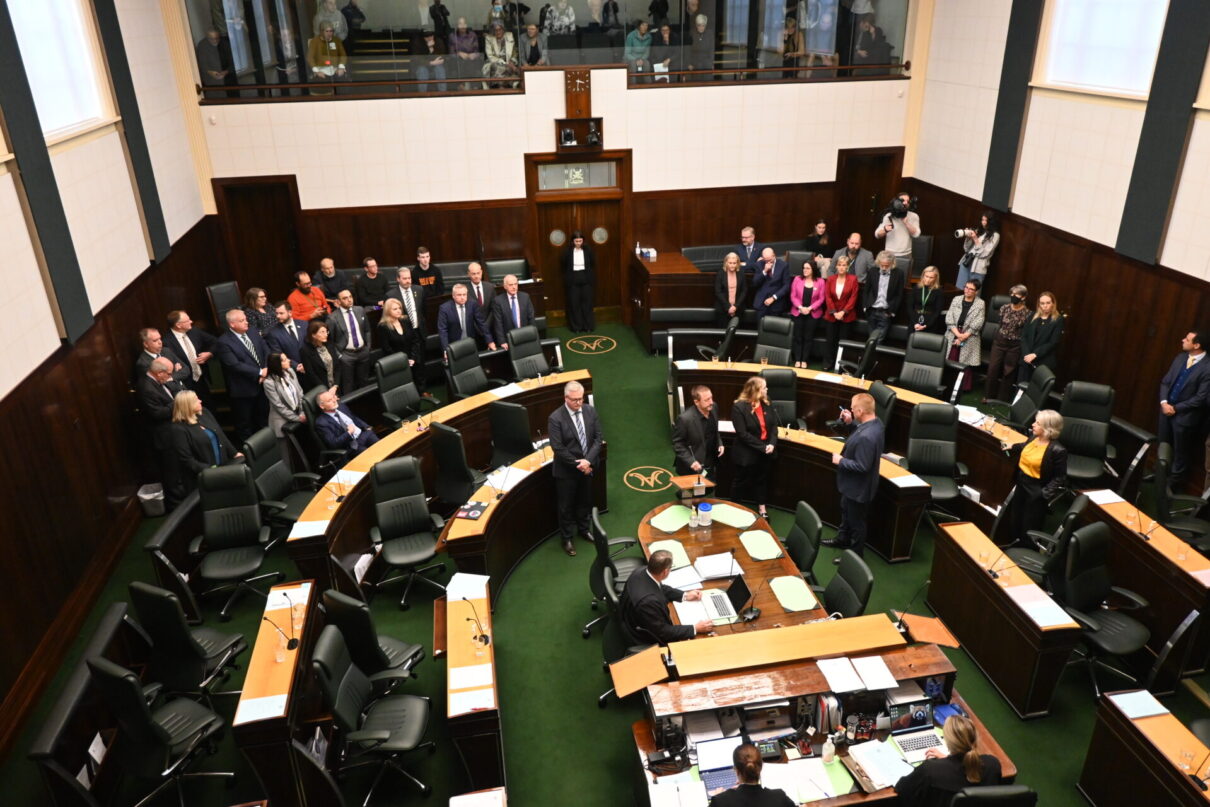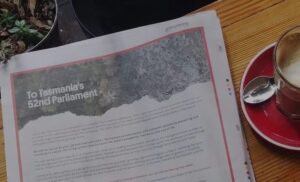It’s pleasing to see a real competition emerging for government in Tasmania the state election a fortnight ago. The Labor Party is finally off the bench and in the game – making a play for crossbench support to form government after refusing the last two opportunities to do so.
So far, negotiations are focusing on procedural changes. But if the numbers in the House of Assembly pan out as expected, it will take more than a conflict resolution process to win over the crossbenchers needed for stable government.
Tasmanians have elected a power-sharing government for the second time in a row. They clearly no longer want Liberal or Labor to act as if they are in majority. Former Premier David Bartlett said recently that he doesn’t think there will be another majority government in his lifetime.
Tasmanian parliamentarians need to get on with making power-sharing government work. A conflict resolution process is necessary, but it’s small beer. Crossbench members know their worth and will likely demand more in exchange for their support.
Both re-elected and new Green and independent crossbenchers have fought to gain traction on issues that matter to their constituents. At least some of them will hold the balance of power, and influence not just who forms government but also what issues will be addressed by Tasmania’s 52nd Parliament.
When crossbenchers and major parties struck successful power-sharing agreements in other Australian parliaments, they covered policy as well as procedure.
In Western Australia, the Nationals were in balance of power after the 2008 election. While they agreed on a conflict resolution process, the Nationals also extracted the “Royalties for Regions” commitment to reinvest mining royalties in regional WA – and secured a Cabinet position for their party leader.
In Victoria, it took a month of negotiations after the 1999 election for Labor to win the support of independents. Labor committed to implement the independents’ Charter of Good Governance – freedom of information reform, restoring funding to the auditor-general and no more privatisations without a full independent inquiry. Labor had been light on policy in the campaign, so being handed a ready-made platform actually proved a strength.
After the 2012 election, the Greens took ministries in the Labor Government of the Australian Capital Territory. Their agreement included no less than one hundred policy commitments, against which they were assessed during the four-year term. Light rail for Canberra, 100% renewable energy and a single conservation agency for the territory are legacies of the agreement, as are important changes to how parliament operates.
In all three cases, the governments that had shared power were re-elected after serving a full term.
Tasmania faces issues that majority government approaches have failed to resolve. Some may appear intractable, but a hung parliament offers an opportunity for fresh thinking.
The proposed AFL stadium is one example. Calls are growing for the Tasmanian Planning Commission to determine the outcome as an independent umpire.
The polluting salmon industry also demands attention. IMAS scientist Dr Scott Bennett has said that “all the ingredients are here” for a similar disaster to that unfolding in South Australian waters currently. Ecosystems and fisheries are collapsing.
Tasmania is more exposed than SA to marine heatwaves, the same species of algae is found here, and industrial fish farming means excessive nutrients – effluent from salmon farms – are polluting coastal water quality. Tasmania’s marine law is 30 years old and doesn’t even mention climate change, let alone provide for the holistic approach needed to prevent disaster.
Australia Institute research shows over 70% of Tasmanians support moving fish farms out of sensitive, sheltered waters. Fish farms could be moved on land, as is being done elsewhere.
A third issue overdue for resolution is truth in political advertising laws, with misleading ads appearing again during this election campaign. Australia Institute research shows almost 90% of Tasmanians want such laws. The ACT has them thanks to the intervention of a crossbench parliamentarian, SA has had them since the mid-1980s, and they have been supported by multi-party parliamentary committees in Victoria and federally.
Lastly, there is broad agreement that Tasmania’s Integrity Commission desperately needs significantly more funding and increased power to be able to do its job effectively.
So, with negotiations now underway over who is willing to work together and form government, the question is, will Liberal and Labor party leaders be open-minded to developing solutions collaboratively, with genuine give and take, in the best interest of Tasmanians? The election of a new power-sharing parliament makes this the perfect time to make progress on these seemingly intractable issues.
This article was originally published in The Mercury.
Between the Lines Newsletter
The biggest stories and the best analysis from the team at the Australia Institute, delivered to your inbox every fortnight.
You might also like
Open Letter to the Tasmanian Government
The Australia Institute and 30 other organisations from around Tasmania have published an open letter with 10 asks for the environment from whomever forms Tasmania’s next government. When cross-benchers and major parties have struck successful power-sharing agreements elsewhere, they covered policy as well as procedure, making now the ideal time for progress.
The system is working, but big parties must heed voters and engage with minor parties
Tasmanians keep voting for a power-sharing parliament over the wishes of the major parties.
End of the LNP Coalition would makes this the largest crossbench in the post-WWII era
A large crossbench might seem unusual, but before WWII they were commonplace in Australia.


